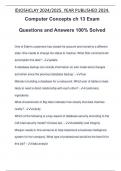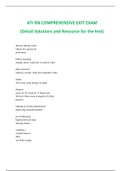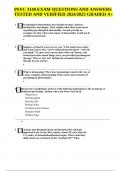Summary
Summary Impairment of assets Ias36
- Institution
- North-West University (NWU)
This document includes all the important summary with regards to Impairments which is Ias36 in the international financial reporting standards. The document includes all of the following; - calculating the recoverable amount - when to test for impairment - impairments on cash generating unit ...
[Show more]








